


The art of using a camera has been a family tradition even during the Czarist era through over five generations.
The picture of the summer 1911 shows Lounema's grandfather Armas Edvard Raassina (1881-1948) with his companies on the northern slope of Pyhätunturi's Kultakero behind the Arctic Circle. The lake Pyhäjärvi lies in the background. The photographer, grandfather himself, shows how to look with the "long eye" which was a strange thing as even the camera during those days in remote Lapland.
The other picture presents him and his family in Saunavaara situated in Pelkosenniemi. Risto's new-born mother lies in her mother's arms. The photo is from the year 1912.
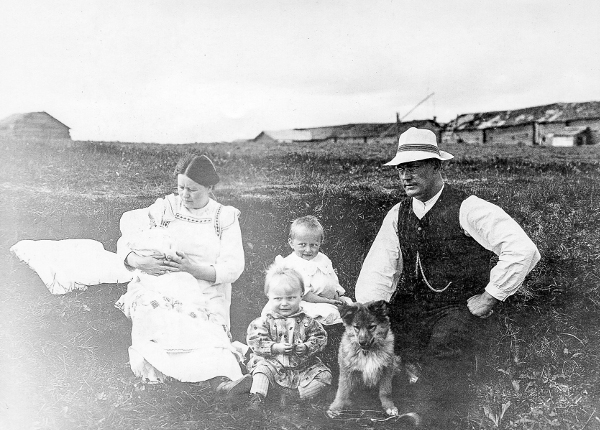
Raassina documented people and life around him, and of course landscapes. These pictures present log floating and boat traffic in the river Kemijoki, wild landscapes in the rivers Nuortti, Kitka and Oulanka as well as Paanajärvi. He documented even reindeer keeping. Tens of the photos have been published as postcards.
Grandfather frequently took photos in Kuusamo while acting there as rural chief police in 1912-1918. (Viikkosanomat 8/1965, 19.2.1965.) Just before him I.K. Inha (1865-1930) had wandered with his camera in the Border and Russian Karelia, Viena.
In the beginning of the 1950's Risto joined a camera society being the only schoolboy at that time. Later on he dealt more extensively with the subject by qualifying for the M.Sc. degree in chemistry at the Helsinki University.
He has acted as photojournalist for more than 65 years. He represents thus the third generation in the field of photography. The fourth and even the fifth generations seem to have the camera in their toolbox.
Risto Lounema's own father made a great number of technical pictures connected with his work. After the war they were extremely important because they helped to repair and replace equipments which could not be acquired from abroad. So he applied photography in an innovative way. Before that he had to learn photography practices. He and son started together studying the basics. It was difficult because of the shortage of material. They were lucky to make laboratory exercises at a photographer situated in the near by city.
Risto Lounema saved up the money for his first camera while being a boyscout in Germany during the summer 1952. The box was by name Bilora Boy.
In his schooldays, before his matriculation 1959, Risto made stories for newspapers. To illustrate them he published over 200 black-and-white pictures, mainly on birds. The newspapers were: Jyväskylän Sanomat, Keskisuomalainen, Helsingin Sanomat, Ilta-Sanomat and Suomen Sosiaalidemokraatti.
The newspaper Jyväskylän Sanomat published his first picture in 1954. Already in 1957 a photo taken by him was published in a magazine. Thousands of Lounema's black and white pictures have been published in different magazines, however less than his colour pictures. Since 1959 his b&w pictures have been accepted into books.



Immediately after Lounema started his studies at the Helsinki University his black and white pictures won prizes in the students´ international exhibitions in different parts of Europe. Soon his sun and moon themes were to be seen in international photo publications. At that time attitudes to internationalization were underrating and nearly negative.
In 1962 Lounema was a founder member of Ylioppilaskamerat ry (Student Cameras). This society still exists. Two years later he was elected Academic Champion In Photography. In 1967 he was awarded the esteemed Helsinki University Student's Unions's art prize as well as the state prize for photo artists. This happened for half a century ago.
In 1960's there raged in Finland a photography museum feaver. There were two busy organizers working for it: business men and bolshevik activists together had their closed foundation project - the holy alliance - and on the other hand some Finnish cultural persons wanted a free society. Risto was one of them.
The State chose the foundation, gave money and thus took the photographic field of art under its control. The totalitarian command started immediately. The foundation (the government) claimed that The Ministry of Justice must forbid the officially registered society. But there were not to be found any grounds for that. Instead a state curse was fallen on those supporting the free society. This ban is still in force.
A remarkable fact to become noted internationally was that the Swiss Camera published on six pages (No 4/1964) Lounema's series Soleil Nordique. This was the first time when Finnish photos were published in this iconic magazine. Typical of the Finnish intelligency that time was that only a few people knew this magazine.
After Master of Science degree he moved with his family for three years to Lapland north of Rovaniemi for documenting the tradiotional reindeer keeping.
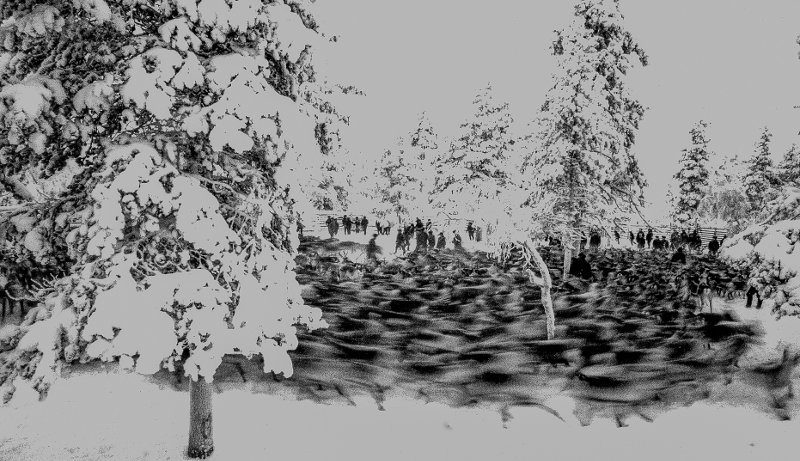

Lapsuudenkotini taulujen joukossa oli kaksi erityisesti mieleen jäänyttä. Oli Aihki, omituinen kummituspuu, pelottava, aavemainen. Toinen oli talvikuva tunturista. Luminen kero metsämeren takana kaukaisuudessa näytti kiehtovalta.
Edellinen oli isoisälleni Armas Raassinalle omistuskirjoituksella 1928 varustettu grafiikka. Sen oli tehnyt kansainvälisestikin tunnettu Harald Gallen (1880-1931). Hänen setänsä oli kultalkauden legenda Akseli Gallen-Kallela.
Muutamia kummituspetäjiä tiedetään kasvaneen Pyhätunturin – Luoston tunturijonon rinteillä vielä 1900-luvun alussa. Sen jälkeen on parturoitu.
Pienehkö, sinisävyinen öljyvärityö näyttää ympäristöstään selvästi kohoavan talvisen Pyhätunturin tieltä, jota pitkin pyöreää kerojen rypästä on aikojen saatossa lähestytty etelän suunnasta. Maalari on paikkakunnan oma mies, Juho Kustaa Kyyhkynen (1875-1909). Sanotaan, että hän on varhaisin Lapin luontoa kuvannut taiteilija. Sain katsella taulua vuoteeni jalkopään yli. Tunturi puolestaan on 12 kilometrin päässä isoisäni virkatalosta, jonka pihalle se näkyy upeasti.
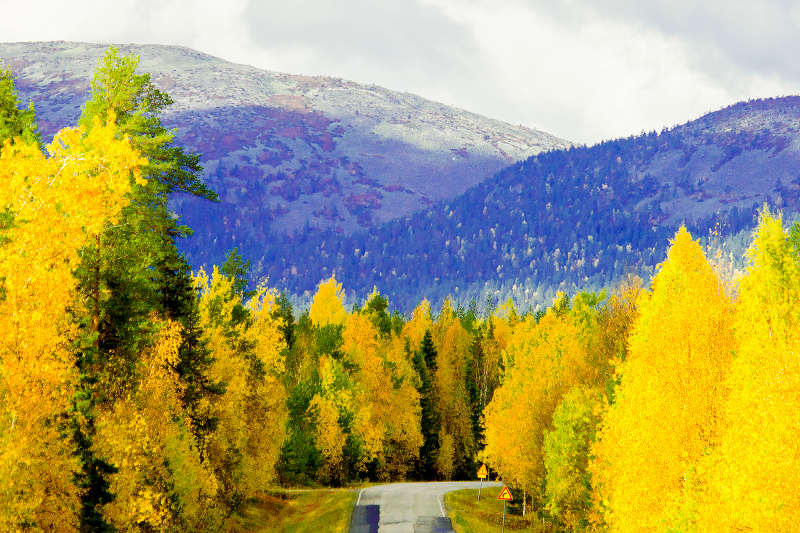
Pyhätunturin ryhmä on vaikuttava maamerkki. Ei ihme, että se on kelvannut vanhojen lapinkylien syrjässä sijaitsevaksi pyhäksi paikaksi. Kovin paljon tietoa, kirjallisessa muodossa mitään ole jäänyt siirrettäväksi tuleville sukupolville. Myöhemmin – pyhän vahvistukseksi –kivilinna on kelvannut rajamerkiksi, Lapin ja Lannan rajaksi.
Linkki: Risto Lounema: Suomen luonnon ihmeitä, s. 227, 2001
Linkki: Risto Lounema: Suomen kansan pyhät paikat, s. 14-17, s. 235, 2003
Luonnonmuodostumana ja –nähtävyytenä se on myös tunnettu. Kerojen keskellä ryhmää jakaa V-muotoinen Isokuru. Sen kumpikin rinne on pakkasrapautumisessa syntyneiden teräväsärmäisten lohkareiden peitossa. Se on ainutlaatuinen maassamme; ja vaikuttava.
Linkki: Risto Lounema: Opas Suomen luonnon ihmeisiin, s. 154-155, 2004
Onko yhdentekevää millaisia kuvia lapsena näkee? Kaikkihan menee käytännössä loppupeleissä ainekirjoituksen kaavalla: Njuha leivän söi, ja paskaa alkoi tulla. Se on primaaria. Ja ikuista. Sitä osaavat kaikki.
Useimmat meistä perusjunteista ovat aitoja njuhia, ja niin ovat misutkin. Jokaisella on kuitenkin keskushermostonsa uumenissa, suojaisimmassa sopukassa piskuinen epifysis, käpylisäke. On sanottu, että se on ihmisen kolmas silmä, sisäinen kello ja sielun koti. Mitättömästä koostaan huolimatta se hoitaa monta virkaa. Jos se on hyvällä päällä, se näyttää jopa värillisiä unia, ja ilmaiseksi. Se on paikka, jossa silmän välittämä näköhavainto muuttuu synapseissa digiksi. Tulos on aina persoonakohtainen.
Ahkerasti ja vuosisatojen ajan asiaa on tutkittu, mutta vielä on paljon selvitettävää. Se on jo tiedossa, että lapsuuden kuvilla on suuri merkitys visuaalisuuden, kuvioiden, matriisien ja Adoben värimaailman ymmärtämisessä. Jos lapsena näkee tiuhaan värillisiä unia, voi toivoa, että aikuisena tulisi luovaksi värikuvaajaksi tai maalariksi. Älä kuitenkaan liikoja luule; ani harvasta tulee. Ei siinä itku ja valtion apuraha auta.
Le Grand Livre Du Soleil, 1973, Edit - Denoel, presents Lounema's black-and-white view of the winter sun on the fjell Pyhätunturi behind the Arctic Circle. The picture is spread over the whole opening.

Among the other artists with their works on the sun in this selection are William Blake, Marc Chagall, Max Ernst, Vincent van Gogh, Friedensreich Hundertwasser, Paul Klee, Rene Magritte, Joan Miro, Claude Monet, Odilon Redon, Claude Rollain, Henri Rousseau, J.W.R. Turner.
The Big Name in photography, British Bill Brandt, collected together with the Victoria and Albert Museum and the curator Mark Haworth-Booth the Exhibition The Land – Twentieth Century Landscape Photographs. The chosen photographers were world-famous. As a new name and the only one from Finland was Risto Lounema.
The other 46 photographers were for instance Ansel Adams, Margaret Bourke-White, Wynn Bullock, Brassai, Henri Cartier-Bresson, Robert Doisneau, Aart Klein, Dorothea Lange, J.H.Lartique, Albert Renger-Patzsch, Man Ray, Aaron Siskind, Edward Steichen, Alfred Stieglitz, Paul Strand, Edward Weston, Minor White.
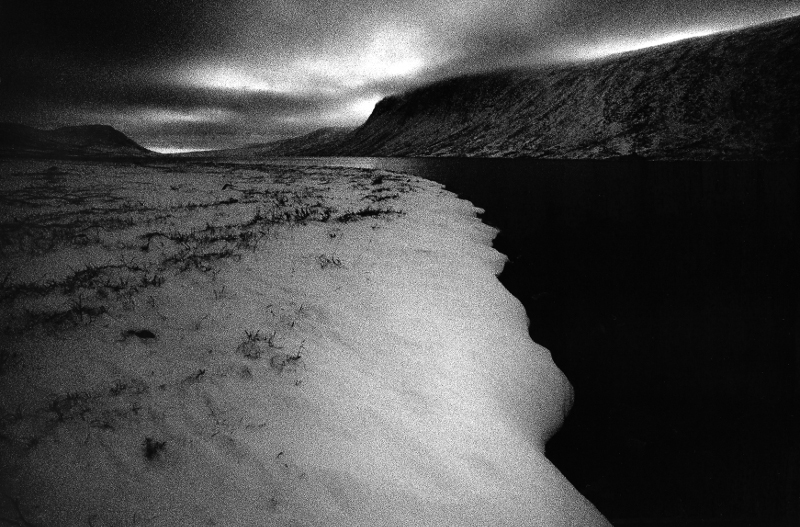
This exhibition has been shown in the Victoria and Albert Museum in London 13.11.1975-15.2.1976. Thereafter it has been exposed at the National Gallery of Modern Art (Edinburgh), Ulster Museum (Belfast), National Museum of Wales (Cardiff) and in Palazzo Querini Stampalia (Venice). The book of the exhibition has been published both in England and in The United States. On the Internet the prize of a new book is over 1000 USD.
A generally accepted assessment is that this collection of landscape pictures is one of the most important ones in the history of the nearly 200 years old photography.
The original work is included in the collections of the University Of California.
A good example of the state's patronage is a case from the beginning of the 1970's. After Bill Brandt had chosen Lounema's picture for his collection the curator of the Victoria and Albert Museum asked for his address from the Finnish Museum of Photography and also from the Foundation. Its Directress answered that "he is no more with us", in other words that Lounema is dead. The saboteur soon became for other reason bitten by her own dogs: she was fired, taken back and soon kicked out again. The Victoria and Albert Museum was persistent. They turned to the Finnish Industrial Art Society. His address was easily found in the telephone directory.
Venezia '79 la Fotografia is said to be the Biggest Photo Show Ever. The giant event was arranged by the Municipality of Venice, UNESCO and The Internatioanl Center of Photography New York as expert body. Electra Editrice, Milan, published a book by the same name in 1979. The other publication was Daniela Palazzoli's Die Kunst der Photographie 1979. In the Helsingin Sanomat there was a large presentation of the event with a relevant mention that Risto Lounema was the only participant accepted from Finland. His picture was in Bill Brandt's The Land Collection.
Macmillan: Contemporary Photographers, 1982, 1988, 1995
Risto Lounema, the only Finnish Photographer among some 800 hits.
Professor Arno Rafael Minkkinen, MIT, USA in Macmillan Contemporary Photographers: "Indeed, it can be said that some of the very best art of Finland has been an art about nature. Certainly Lounema's determination to arrest the effulgent splendors of Finland's natural forces, as revealed in his grain-textured photographs of the sun and moon - of birds migrating just above the treetops - approaches the very pinnacle of such motivations."
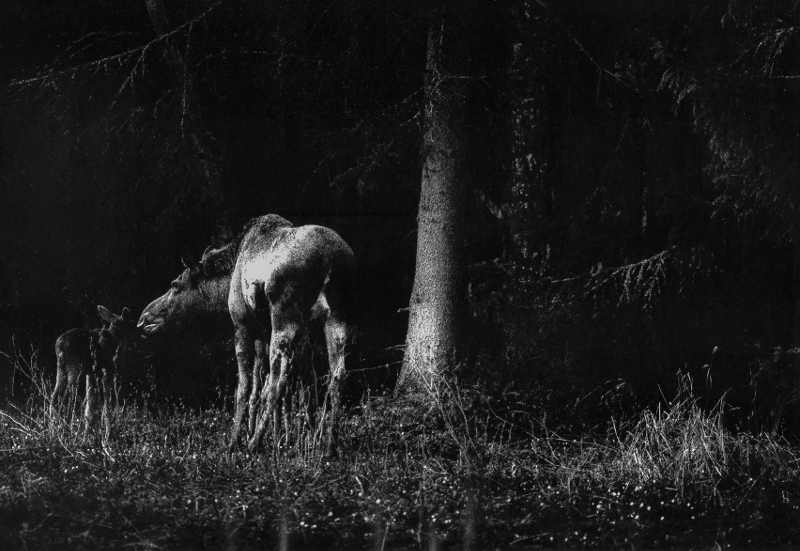
The material of the book is kept in the University of Minnesota. In Finland this esteemed reference book did not meet general acceptance: the selected photographers were not "the right ones". According to The Photographic Year Book 1973 published by the State of Finland big names in photography were Marx, Lenin and Engels. The others were not worth mentioning.
In Macmillan Contemporary Architects twelve Finns for example Aalto, Bryckman, Ervi, Pietilä, Ruusuvuori, Saarinen, Siren.

Editions Camera Obscura: Photographers Encyclopaedia International 1839 to the present, 1985
About 1600 Photographers covering also nine other Finns.
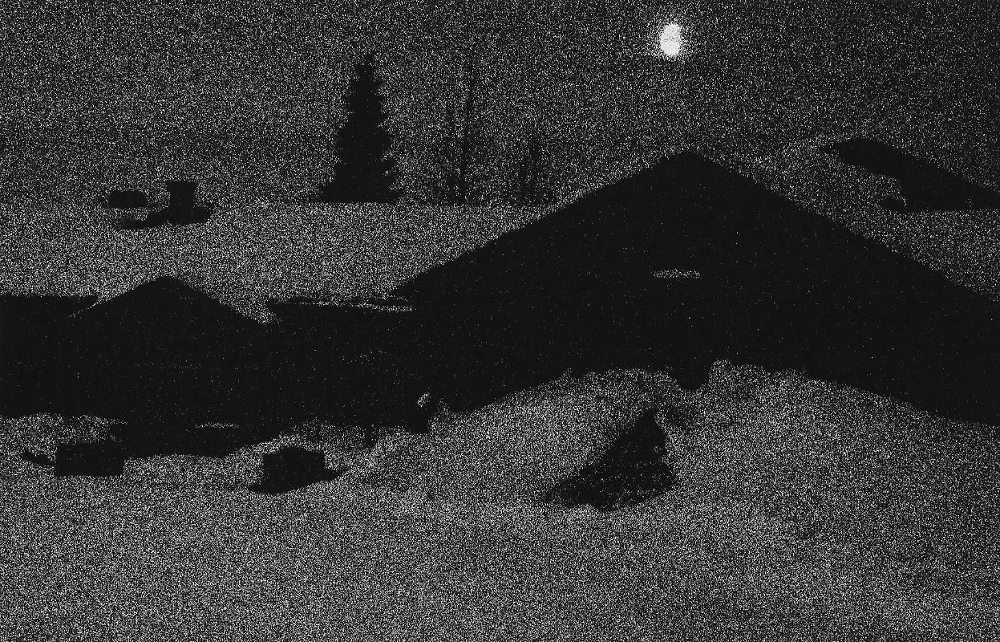

Picture Freedom
Photographers' Gallery London 14-16 September 1993
An Exhibition and Auction of Photographers for Voter Education for the First Democratic Elections in South Africa.
Among those 150 invited from all over the world, Risto Lounema was the only one from Finland. He wanted to support democratic development and sent to the auction his work The Rising Sun, Pyhätunturi Lapland. According to the organizers this symbolic black and white picture was sold "at good price".
Risto Lounema (born 1939) is an internationally recognized colour photographer. He started photographing 1952 and stepped to colour 1961. - But his grandfather was a real early bird; he developed colour plates in his tent in Lapland even in the 1910’s, for over a century ago.
Risto took his first colour pictures while being a schoolboy as summer trainee in Hamburg 1957. His breakthrough was in the New York World's Fair 1964 - and this is for more than half a century ago. He won in the Kodak International Colour Picture Competition three silver and seven bronze medals. This is a unique achievement in a gigantic global competition like this with more than 150 000 participants from 58 countries.

Life International published one of Lounema's winning pictures in two issues. All priced pictures are in the collections of George Eastman House, the oldest photo museum in the world.
Next remarkable victory was the Nikon Photo Contest 1970 in Tokyo with 23 000 entries from 40 countries. Lounema won two silver medals. The other one of his winning pictures was printed on the first page of the catalogue (right). In the years 1971, 1973 and 1974 he won bronze medals. The total number of entries in the competition has yearly been 30 000-40 000 from over 40 countries.
Lounema has visited Nikon H.Q. in Tokyo and Nikon Mito Plant.

The Lounemas have been presented to the Imperial Prince and Princess in Tokyo 1987.

Risto and Inari Lounema with Masaru Ibuka, one of the two founders of SONY company.
Lounema has twice been invited to arrange a photo exhibition in Murmansk USSR. After the second one 1973 the Museum’s official critics stated that "Risto is known particularly as a master of colour photography". Lounema has also made a unique 25 minutes colour document film of Murmansk which that time in 1973 was a closed city to foreigners. This film has been twice shown on the Finnish television MTV1 Channel. Also all the other TV documents by Lounema are 16 mm SEPMAG colour.

To understand colours and how to capture them on the film Lounema has studied the topics at Helsinki University. All his thesises for the Master of Science degree deal with photographic chemistry. His Pro Gradu examination is called The Latest Understanding of Latent Image Formation. More than this he has studied e.g. Young-Helmholz Theory and chrystallography. He is an expert in using Kodak Ektachrome Infrared Film (false colour film) which he has developed in his own laboratory 1964-1998. He has visited twice National Geographic Magazine’s laboratory in Washington.
Lounema has got from NASA a diploma with a small piece of the first film photographed on the ground of Moon by APOLLO 11 flight 1969. It was given to him with special thanks for ideas in hypersensitization of reversal colour film.